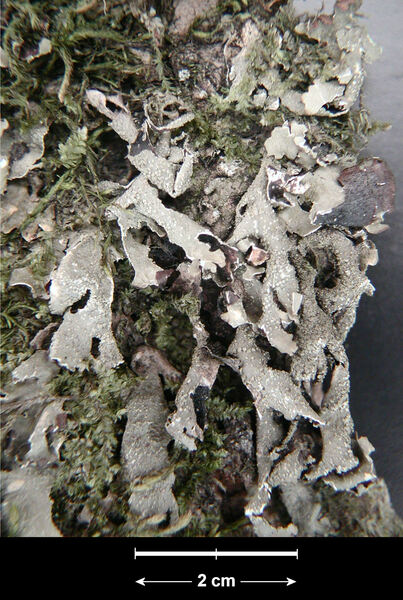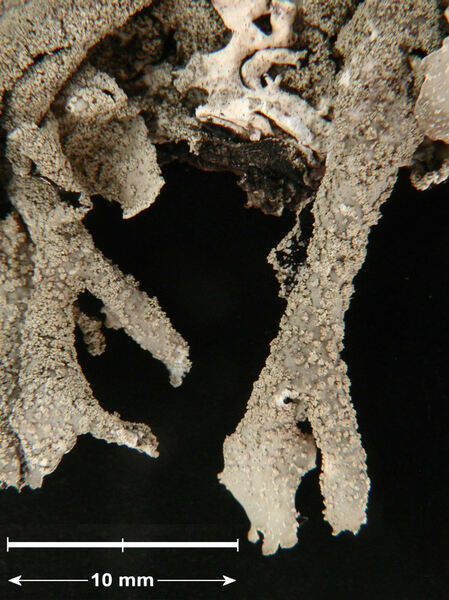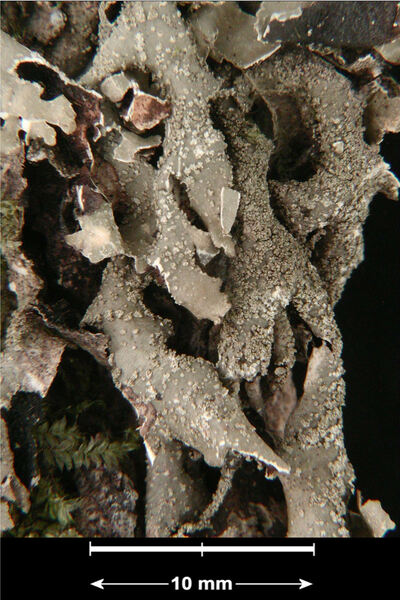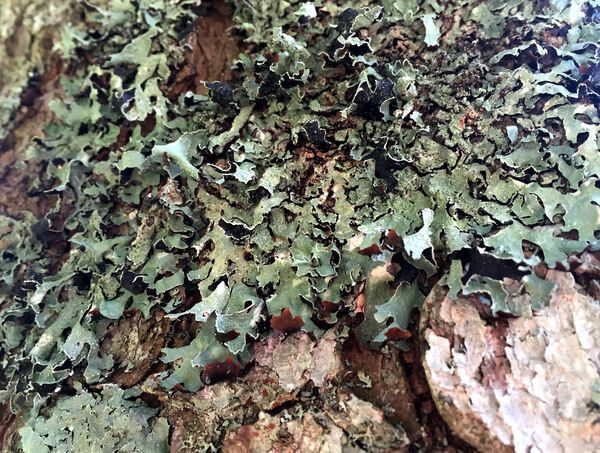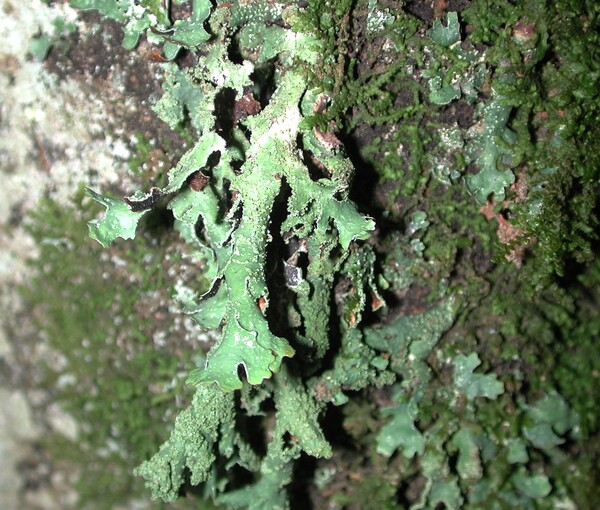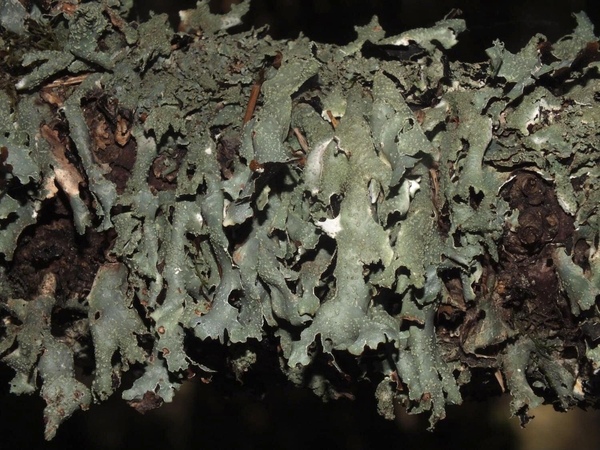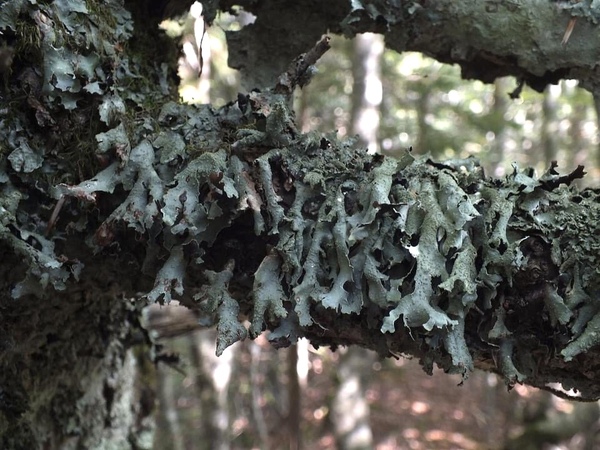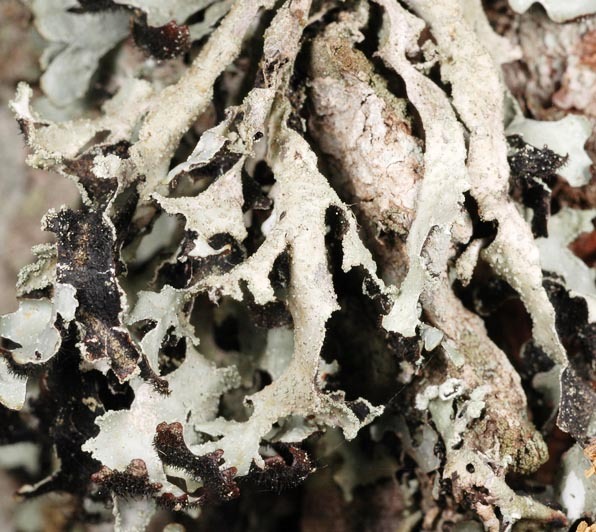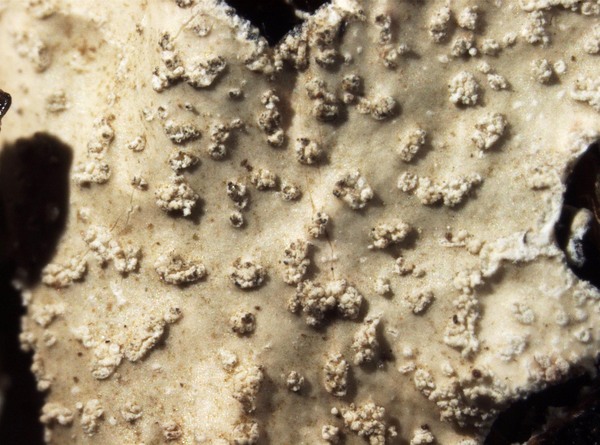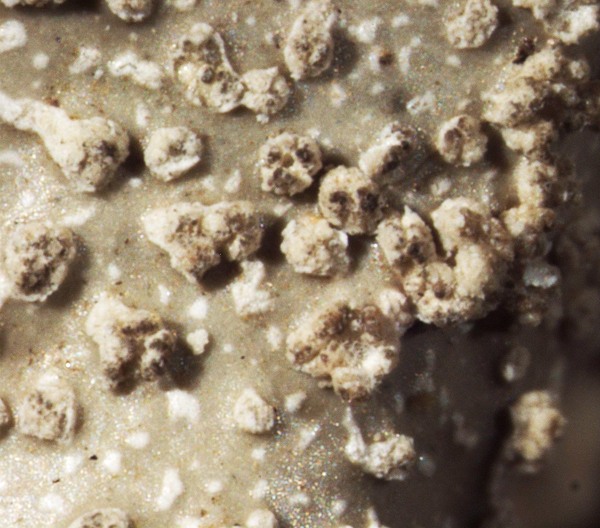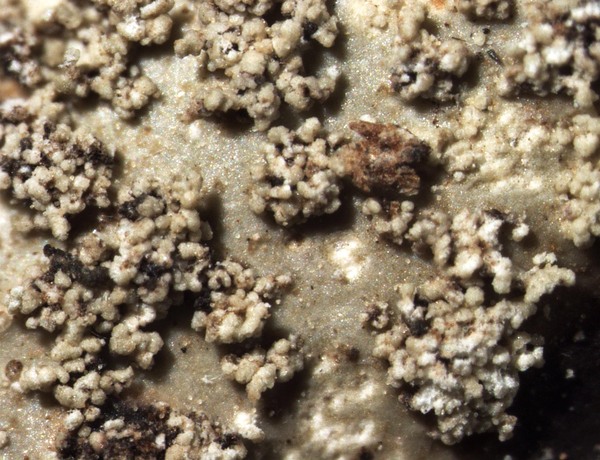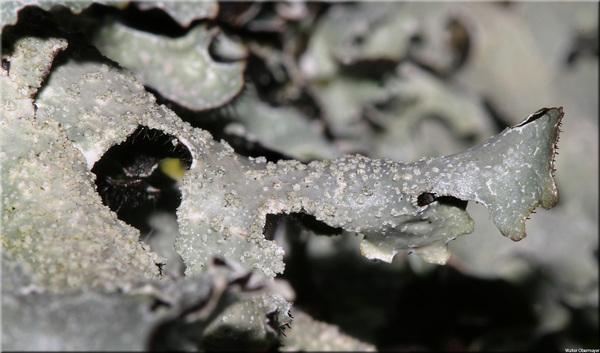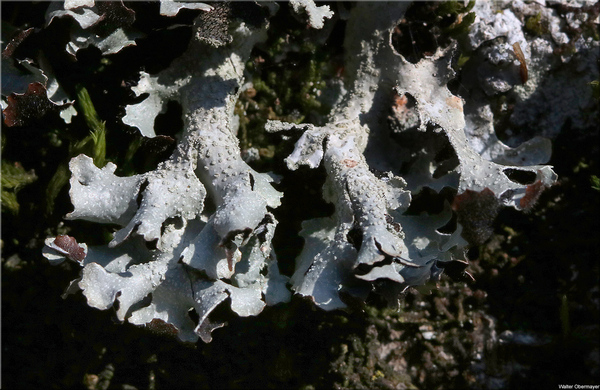Parmelia submontana Hale
Smithsonian Contr. Bot., 66: 44, 1987.
Synonyms: Parmelia bohemica Nádv. non Gyeln.; Parmelia contorta Bory non (Hoffm.) Spreng.; Parmelia saxatilis var. contorta (Bory) Zahlbr.; Parmelia sulcata var. contorta (“Bory”) Nyl.; Parmelia sulcata var. contortoides Zahlbr.
Distribution: N - Frl (Nascimbene & al. 1998), Ven (Caniglia & al. 1999, Nascimbene & Caniglia 2000, 2000b, 2003c, Nascimbene 2005c, 2008c, Thor & Nascimbene 2007, Nascimbene & al. 2009c, 2010b, 2013b), TAA (Nascimbene & Caniglia 2000, 2000b, Nascimbene 2005b, 2008b, Nascimbene & al. 2007b, 2022, Nimis & al. 2015), Lomb (Gheza 2019), VA (Borlandelli & al. 1996, Piervittori & Isocrono 1997, 1999), Emil (Dalle Vedove & al. 2002, Tretiach & al. 2008, Benesperi 2009, Fariselli & al. 2020), Lig (Brunialti & al. 1999, Giordani & al. 2002). C - Tosc (Tretiach & Nimis 1994, Tretiach & Ganis 1999, Putortì & al. 1999, Benesperi 2006, 2011, Benesperi & al. 2007, Brackel 2015, Nascimbene & al. 2015, Lich. Ital. Exs. 49: Isocrono & al. 2021, Frati & Brunialti 2023), Marc (Nimis & Tretiach 1999), Umb (Ravera 1998, Ravera & al. 2006), Laz (Ravera 2001, Massari & Ravera 2002, Nimis & Tretiach 2004, Brackel 2015), Abr (Nimis & Tretiach 1999, Stofer 2006, Gheza & al. 2021), Mol (Nimis & Tretiach 1999, Caporale & al. 2008, Brackel 2020), Sar (Zedda 1995, Nöske 2000, Zedda & al. 2001, Rizzi & al. 2011, Di Nuzzo & al. 2022). S - Camp (Aprile & al. 2003b, Nascimbene & al. 2010b, Garofalo & al. 2010, Brunialti & al. 2013, Ravera & Brunialti 2013), Pugl (Nimis & Tretiach 1999), Bas (Nimis & Tretiach 1999, Potenza 2006, Potenza & al. 2010, Brackel 2011), Cal (Puntillo 1995, 1996), Si (Brackel 2008b).
Description: Thallus foliose, heteromerous, dorsiventral, very loosely attached, not forming rosettes. Lobes strap-shaped, geotropically oriented, with upwards incurved apices, sublinear, elongate, separate, to 7 cm long, 2-4(-6) mm wide, often with down-rolled margins. Upper surface grey (to pale brown in exposed situations), with a network of white, elongated pseudocyphellae which erode to form punctiform, up to 0.3 mm wide soralia soon developing dense clusters of subglobose to ovoid, rarely coralloid, c. 0.2 mm wide, soft isidia. Lower surface black, except at the brown apices, with simple to rarely furcate, black rhizines, most abundant in the older parts of thallus. Upper cortex paraplectenchymatous, of 2-6 layers of densely packed cells, with a usually non-pored epicortex, the cell walls with isolichenan; medulla white; algal layer continuous; lower cortex paraplectenchymatous, thinner than upper cortex. Apothecia extremely rare, lecanorine. Ascospores 1-celled, hyaline, ellipsoid. Photobiont chlorococcoid. Spot tests: upper cortex K+ yellow (but often slowly turning dirty orange-red due to medullary substances), C-, KC-, P+ orange-yellow; medulla K+ yellow turning orange-red, C-, KC-, P+ orange-red, UV-. Chemistry: upper cortex with atranorin; medulla with salazinic acid (major) and consalazinic acid (minor). Note: on the trunks of old trees (mainly Fagus and Abies) in humid montane forests; locally very abundant in beech forests of the Apennines, much rarer in the Alps.
Growth form: Foliose, broad lobed
Substrata: bark
Photobiont: green algae other than Trentepohlia
Reproductive strategy: mainly asexual, by isidia, or isidia-like structures (e.g. schizidia)
Commonnes-rarity: (info)
Alpine belt: absent
Subalpine belt: absent
Oromediterranean belt: absent
Montane belt: rather rare
Submediterranean belt: absent
Padanian area: absent
Humid submediterranean belt: absent
Humid mediterranean belt: absent
Dry mediterranean belt: absent

Predictive model
Herbarium samples
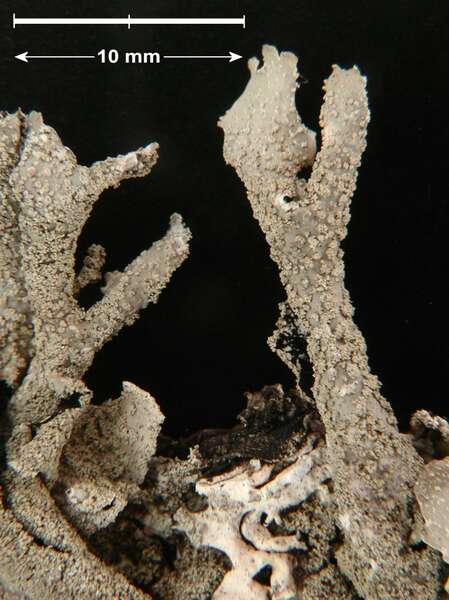

G. Incerti; Owner: Department of Life Sciences, University of Trieste
Herbarium: TSB (17784)
2001/11/26
lobes
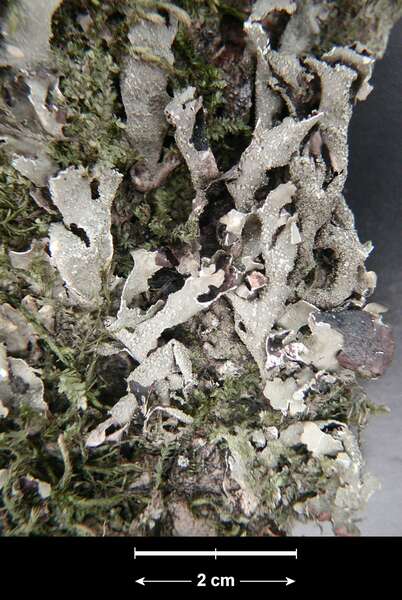

G. Incerti; Owner: Department of Life Sciences, University of Trieste
Herbarium: TSB (17784)
2001/11/26
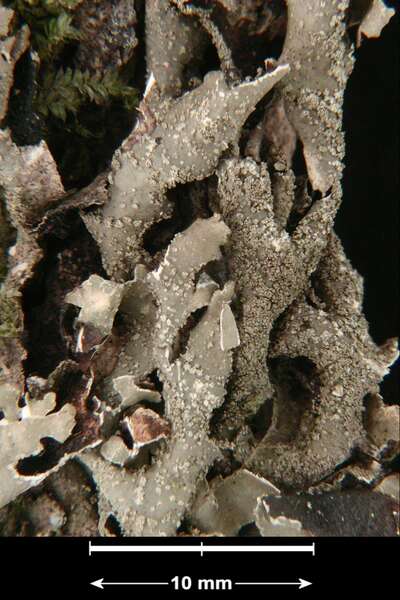

G. Incerti; Owner: Department of Life Sciences, University of Trieste
Herbarium: TSB (17784)
2001/11/26
lobes
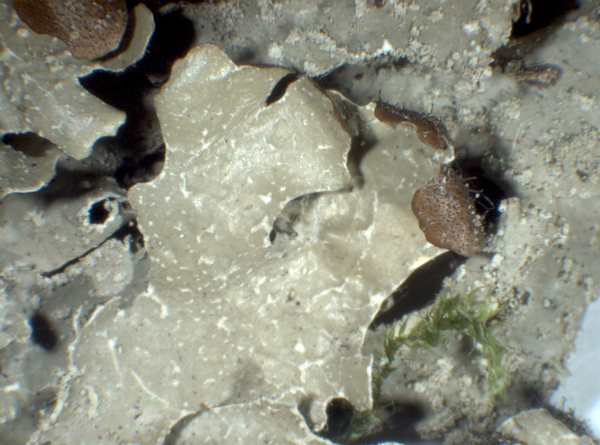

P.L.Nimis; Owner: Department of Life Sciences, University of Trieste
Herbarium: TSB (36994)
2008.02.28
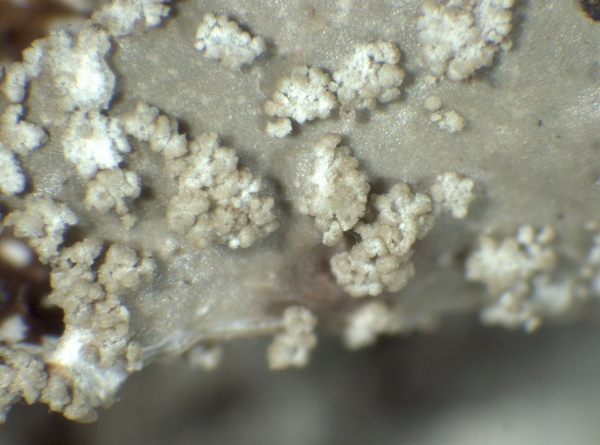

P.L.Nimis; Owner: Department of Life Sciences, University of Trieste
Herbarium: TSB (36994)
2008.02.28
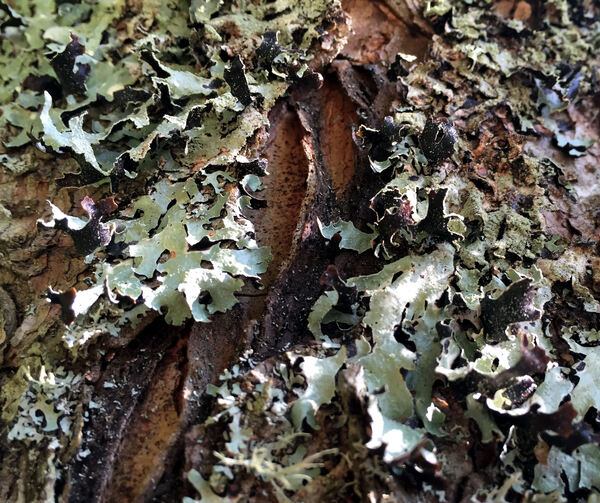

P.L. Nimis; Owner: Department of Life Sciences, University of Trieste
Italy, Friuli Venezia Giulia, Udine, Passo del Pura, Ampezzo Carnico, 1400 m
09.09.2016
Growth form: Foliose, broad lobed
Substrata: bark
Photobiont: green algae other than Trentepohlia
Reproductive strategy: mainly asexual, by isidia, or isidia-like structures (e.g. schizidia)
Commonnes-rarity: (info)
Alpine belt: absent
Subalpine belt: absent
Oromediterranean belt: absent
Montane belt: rather rare
Submediterranean belt: absent
Padanian area: absent
Humid submediterranean belt: absent
Humid mediterranean belt: absent
Dry mediterranean belt: absent

Predictive model
| Herbarium samples |


G. Incerti; Owner: Department of Life Sciences, University of Trieste
Herbarium: TSB (17784)
2001/11/26
lobes


G. Incerti; Owner: Department of Life Sciences, University of Trieste
Herbarium: TSB (17784)
2001/11/26


G. Incerti; Owner: Department of Life Sciences, University of Trieste
Herbarium: TSB (17784)
2001/11/26
lobes


P.L.Nimis; Owner: Department of Life Sciences, University of Trieste
Herbarium: TSB (36994)
2008.02.28


P.L.Nimis; Owner: Department of Life Sciences, University of Trieste
Herbarium: TSB (36994)
2008.02.28


 Index Fungorum
Index Fungorum
 GBIF
GBIF

